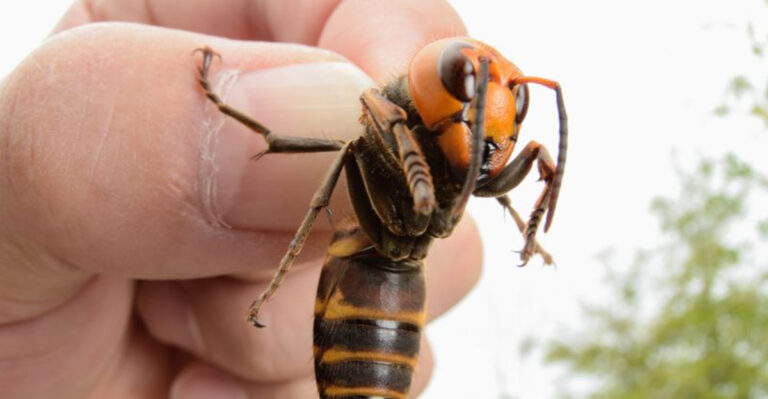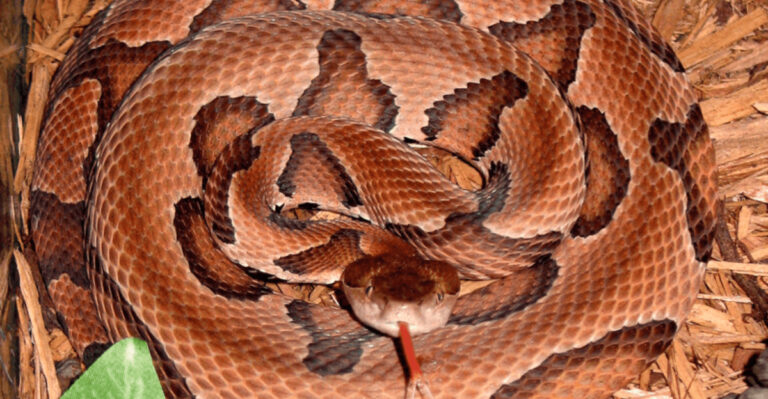The Ultimate Guide: Largemouth Vs. Smallmouth Bass
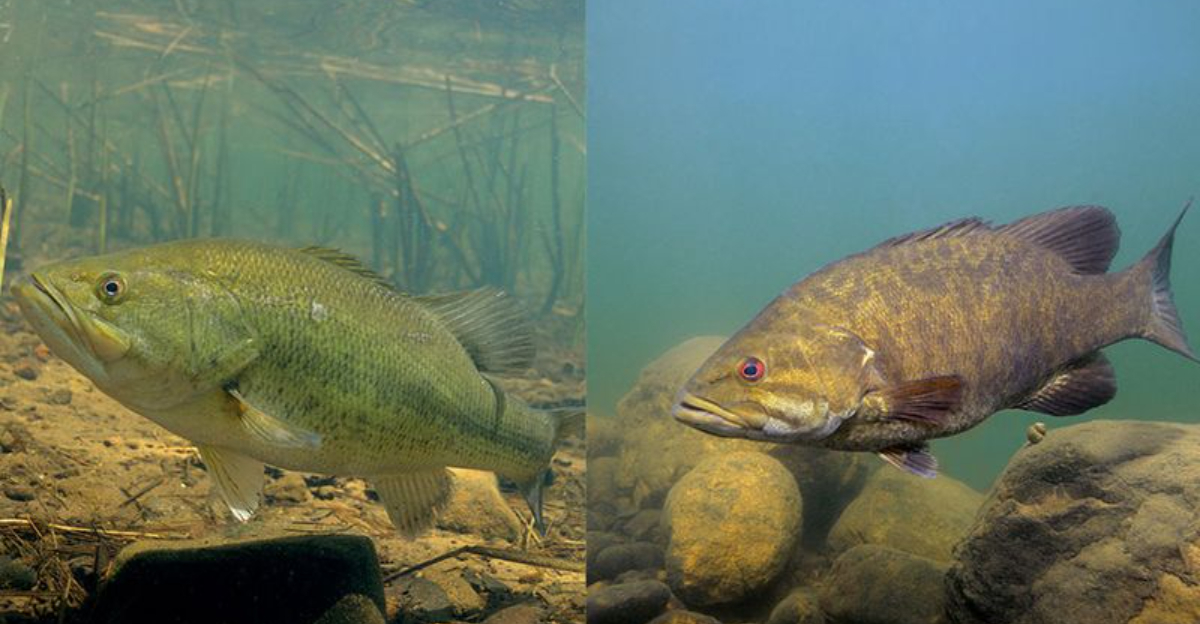
Ever caught a bass but weren’t quite sure which type you reeled in? Largemouth and smallmouth bass might look similar at first glance, but these popular gamefish have fascinating differences that set them apart.
Whether you’re casting lines this weekend or just curious about these underwater predators, knowing these distinctions will transform your fishing experience and appreciation for these remarkable species.
1. Jaw Structure: The Telltale Giveaway
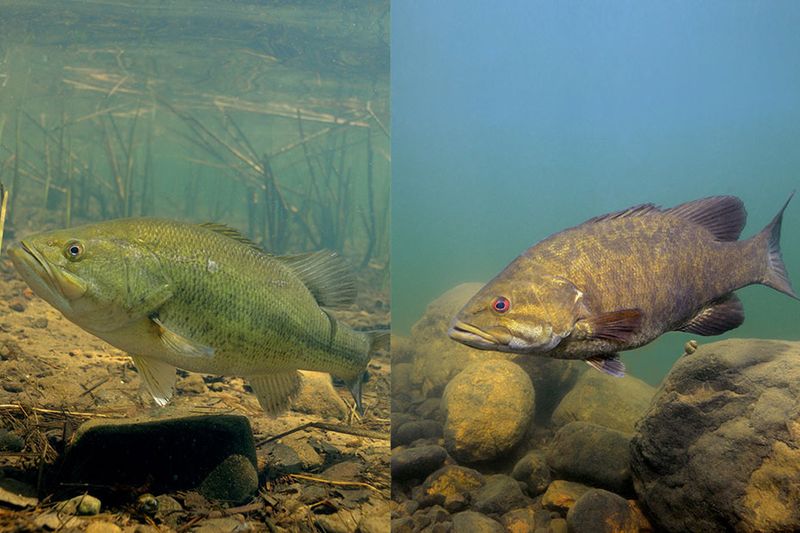
The largemouth’s jaw extends well beyond its eye, while the smallmouth’s jaw stops right at the eye line. This mouth difference isn’t just for looks!
Largemouths evolved their oversized jaws to gulp down larger prey in a single swallow. Smallmouths, with their more modest mouths, tend to be more tactical feeders.
2. Color Patterns That Pop

Think green for largemouth and bronze for smallmouth. Largemouths showcase olive-green bodies with a distinctive horizontal stripe along their sides.
Smallmouths rock a bronze or brown body decorated with vertical dark bars. These color differences help them blend into their preferred habitats – largemouths in weedy green waters, smallmouths in rocky, clearer environments.
3. Habitat Sweet Habitat

Cozy weeds and structure attract largemouths, who love hanging out in shallow, murky waters with plenty of cover. They’re ambush predators at heart!
Rocky terrain calls to smallmouths, who prefer clearer, cooler waters with gravel or rocky bottoms. This habitat preference shapes everything from their body shape to hunting style.
4. Fighting Style When Hooked
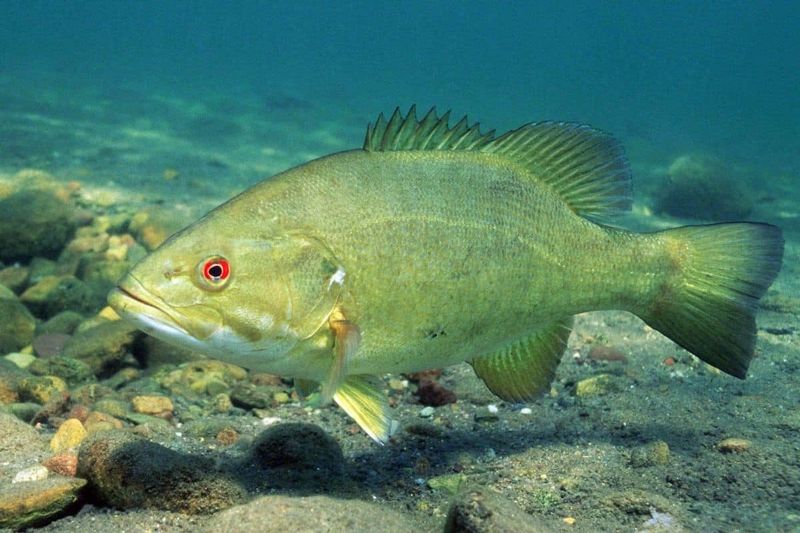
When hooked, largemouths often shoot upward, breaking the water’s surface with spectacular aerial displays. They’ll shake their heads violently, trying to throw your hook.
Smallmouths? Pure underwater powerhouses. They dive deep and pull hard, using the current when available. Many anglers swear pound-for-pound, smallmouths fight harder than their big-mouthed cousins.
5. Body Shape Differences
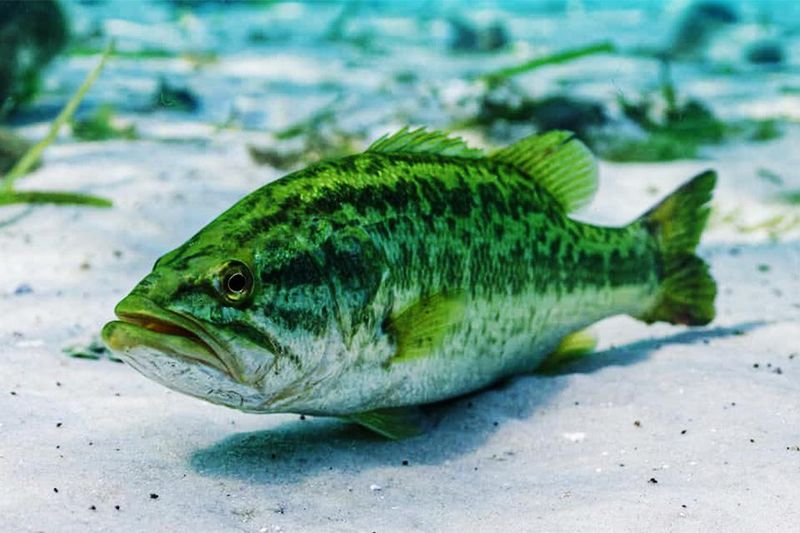
Built like underwater linebackers, largemouths have deeper, more compressed bodies that sacrifice some speed for power. Their stockier build helps them navigate through thick vegetation.
Smallmouths sport a more streamlined, torpedo-shaped body. This aerodynamic design helps them cut through current and makes them speedier swimmers – perfect for their rocky, sometimes swift-water homes.
6. Eye Size Surprises

Spot a bass with eyes that seem a bit too big for its head? You’re likely looking at a smallmouth. Their larger eyes help them spot prey in the clearer waters they prefer.
Largemouths have proportionally smaller eyes since they rely more on sensing vibrations in murky waters than sharp vision. Nature perfectly equipped each species for their hunting grounds!
7. Temperature Preferences

Warm water feels just right to largemouths, who thrive in temperatures between 65-85°F. They become sluggish when waters cool, often moving deeper during winter months.
Smallmouths prefer a refreshing chill, favoring 60-75°F waters. This cooler preference explains why they’re often found in northern lakes and streams with cooler average temperatures.
8. Feeding Habits That Differ
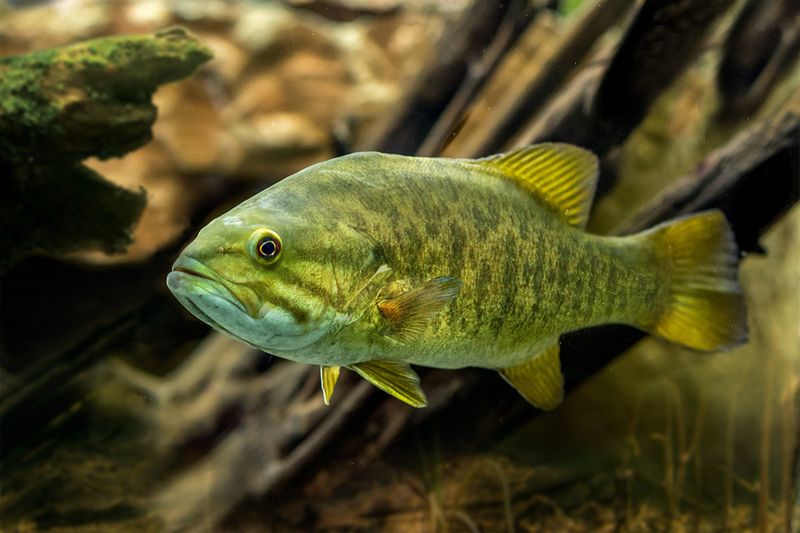
Ambush tactics define largemouth feeding. They’ll lurk motionless in weeds, then explosively lunge at passing prey – often swallowing smaller fish whole thanks to that massive mouth.
Smallmouths take a more active approach, frequently chasing down prey in open water. They’re also more likely to feed on crawfish, which explains their stronger jaws for crushing crustacean shells.
9. Spawning Behavior Contrasts

Spring signals spawning time for both species, but their approaches differ. Largemouths build nests in protected, shallow areas with soft bottoms, often near vegetation that shelters their young.
Smallmouths prefer building nests near or against hard structures like rocks or logs in slightly deeper water. They’re also known to spawn in cooler water temperatures than their largemouth relatives.
10. Size Potential Showdown
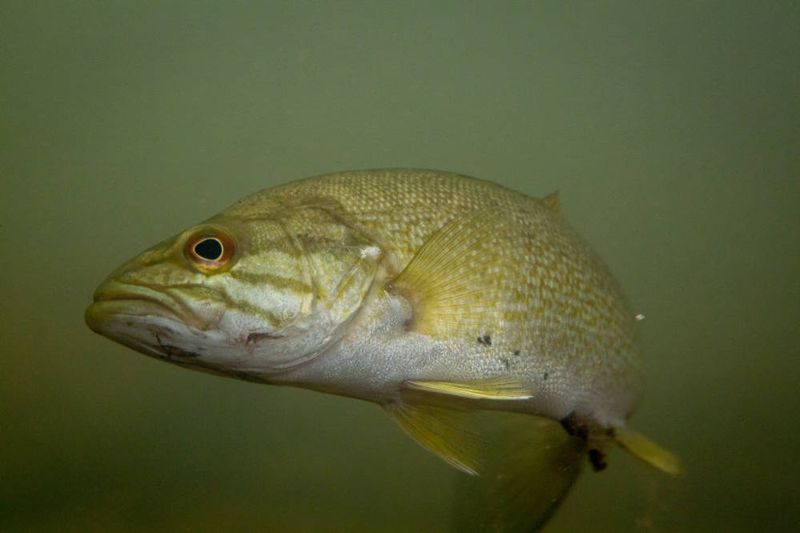
When it comes to maximum size, largemouths take the trophy! These giants can exceed 20 pounds in ideal conditions, with the world record standing at a whopping 22 pounds, 4 ounces.
Smallmouths stay more modest, typically maxing out around 12 pounds. The current world record smallmouth weighed 11 pounds, 15 ounces – impressive, but still dwarfed by their larger cousins.
11. Scales Tell Different Stories
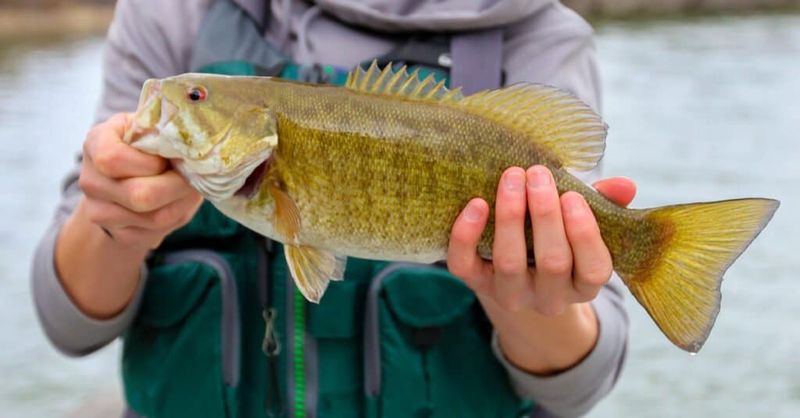
Run your finger along a largemouth’s body, and you’ll feel relatively smooth scales. These smaller, more numerous scales give the fish a sleeker feel despite its bulkier build.
In contrast, smallmouth scales feel noticeably rougher and appear larger relative to the fish’s body size. This coarser texture helps protect them in the rocky environments they call home.
12. Tail Fin Distinctions
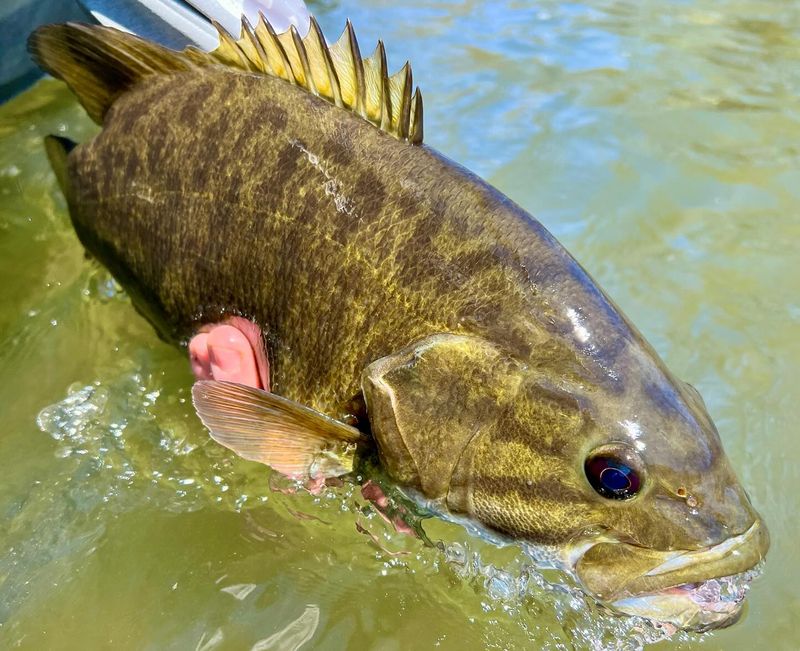
Watch closely when a bass swims away – their tail fins offer clues to their identity. Largemouths typically have a more rounded, slightly notched tail fin that provides good acceleration for short bursts.
Smallmouths sport a more deeply forked tail fin, giving them better sustained swimming power in flowing waters and allowing for the impressive long runs they’re known for.
13. Lifespan Differences

In the wild, largemouths typically live 10-16 years, though some can reach 20+ years in optimal conditions. Growth slows dramatically after about age 5.
While smallmouths generally enjoy slightly longer lifespans, they commonly reach 15-18 years. The oldest verified smallmouth on record lived to be 26 years old – quite the senior citizen in the bass world!
14. Distribution Range Variations
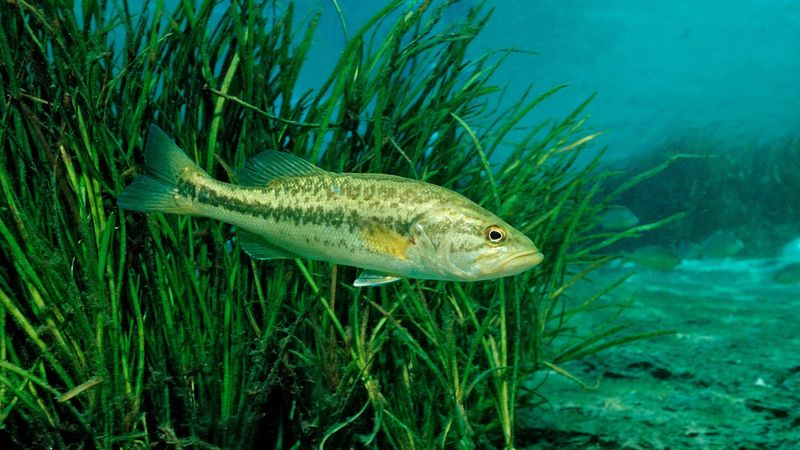
Originally native to eastern and central North America, largemouths have been successfully introduced worldwide. Their adaptability has made them one of the most widespread freshwater gamefish on the planet.
Smallmouths maintain a more limited range, thriving primarily in northern waters. While they’ve been introduced elsewhere, they’re pickier about habitat conditions and haven’t spread as extensively as their adaptable cousins.





